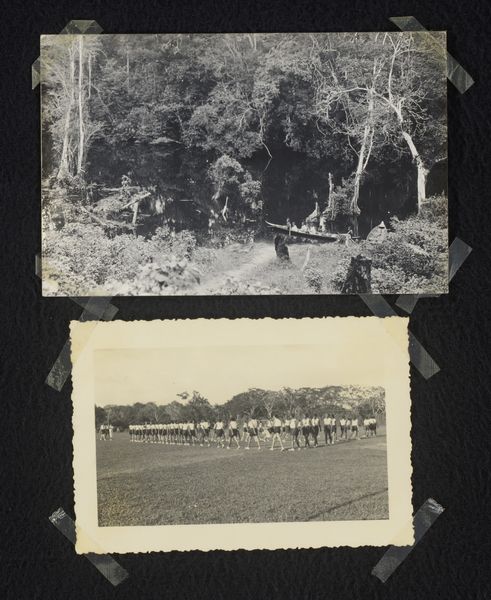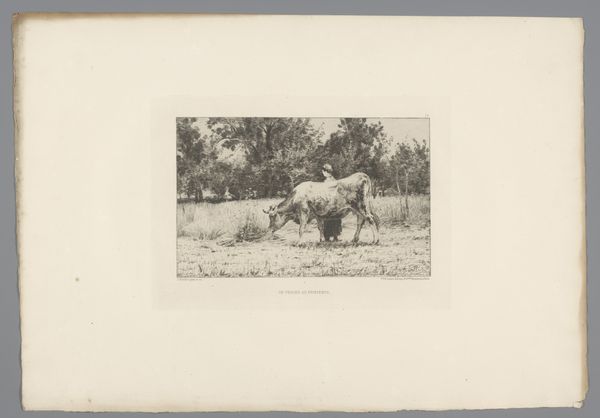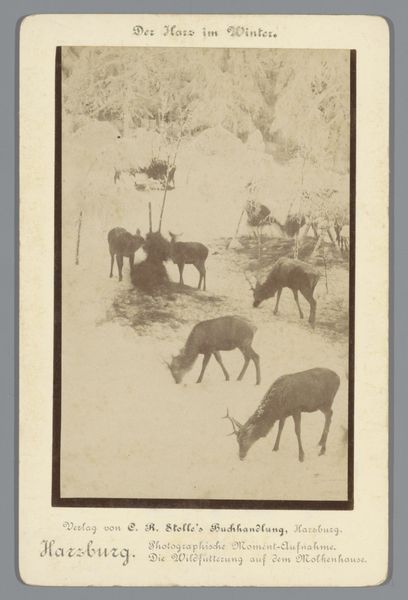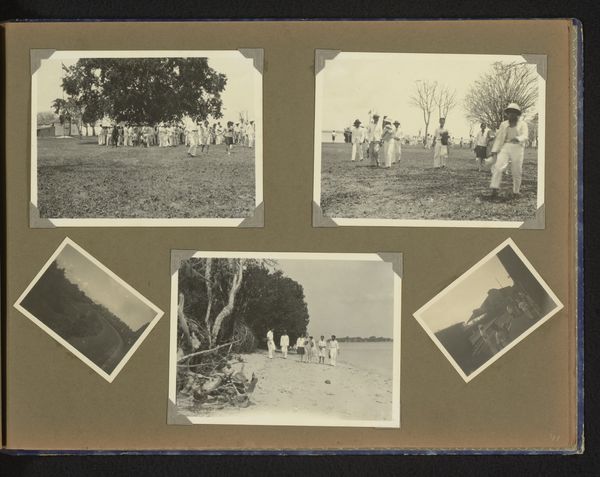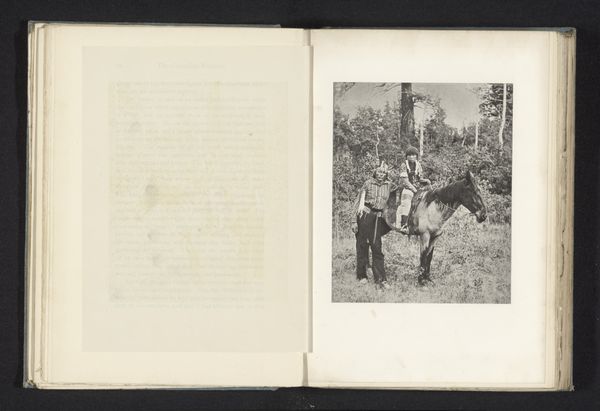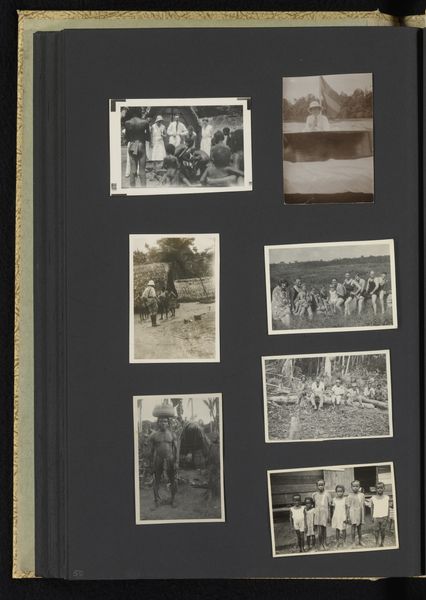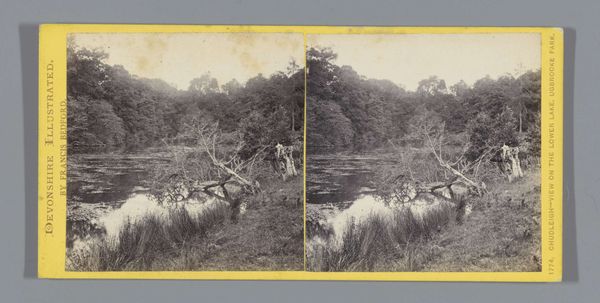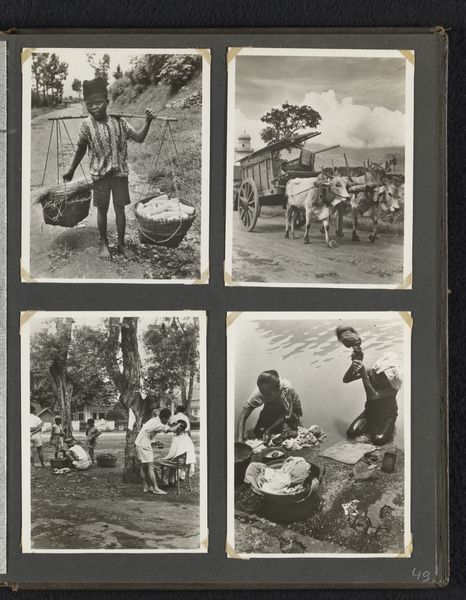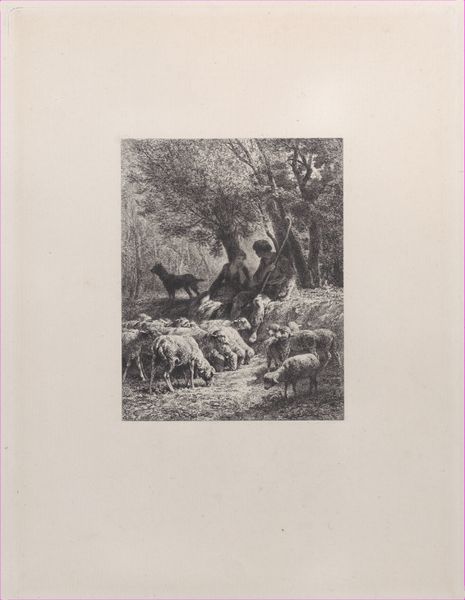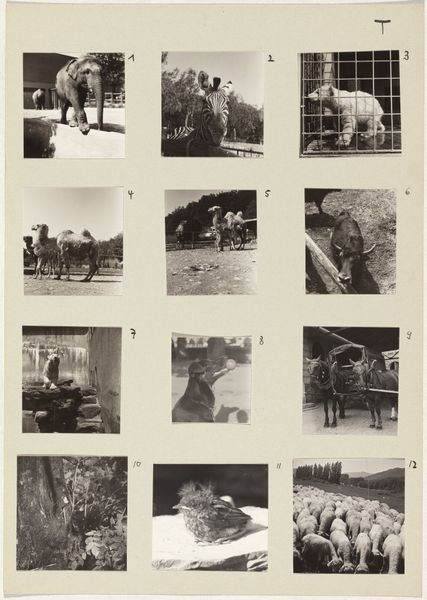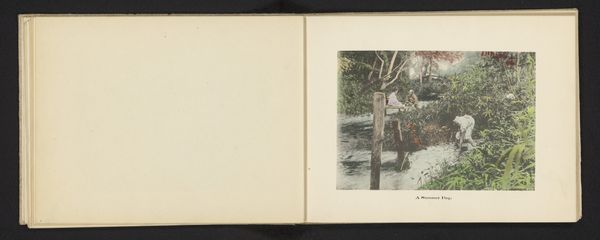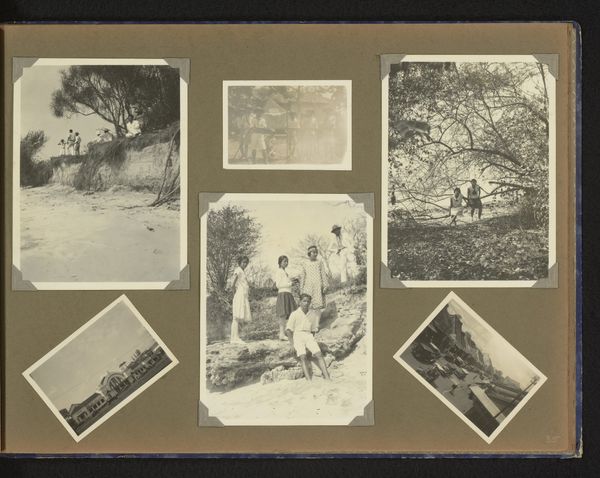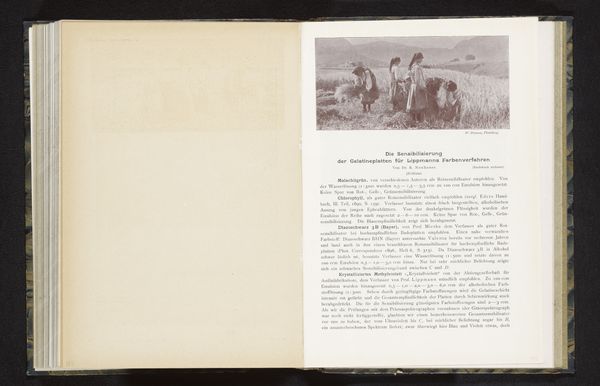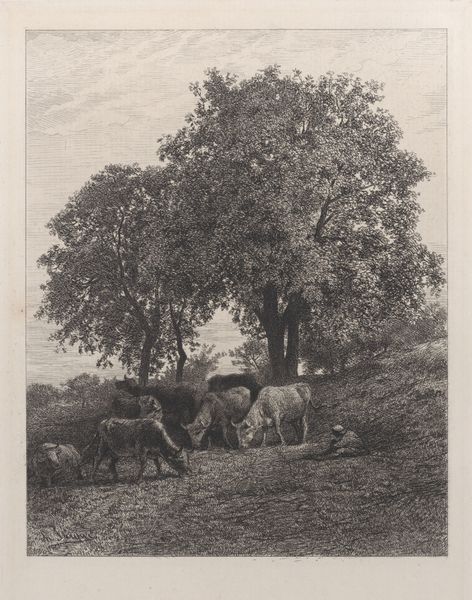
photography
#
african-art
#
landscape
#
street-photography
#
photography
#
genre-painting
#
realism
Dimensions: height 240 mm, width 190 mm
Copyright: Rijks Museum: Open Domain
Curator: This is a photograph by Willem Jacob van den Berg, titled "Kudde Afrikaner rundvee bij Shewasaulu, Zuid-Afrika," taken in 1967. It is currently part of our collection here. Editor: Immediately, the density of the herd catches my eye, the seemingly endless number of animals set against a washed-out background. There’s a strange intimacy, viewing the animals up close, combined with the distant horizon, all wrapped within what appears to be an album page. Curator: Indeed. Van den Berg presents the images as observed studies, capturing aspects of daily life and agricultural practices. Note the subject matter in the image itself, a herder overseeing Afrikaner cattle, framed by a landscape rendered with a direct and seemingly unfiltered lens. The overall photographic act is rendered quotidian through the album context. Editor: Absolutely, but how conscious was the artistic framing, the documentary impulse versus commentary? I find myself considering what "genre-painting" and "realism," as applied to photography, really signify. Curator: I see that you're pushing us to examine its socio-political underpinnings, to consider Van den Berg’s methods. Think about the use of materials, this particular paper and developing process common at the time, that yields a faded and desaturated aesthetic. Does this serve as an artifact or commentary? Editor: Perhaps both, the muted palette of this specific period print contributes to its emotional impact. There is something about the contrast between the individual – a child – herding this abundance, this resource and the land which seems arid in comparison that makes this a captivating photo. Curator: The composition directs our sight through the vastness of the area depicted. It’s a document that opens a window into agricultural production within this South African context, and I appreciate how the use of light adds another dimension to its affect. Editor: Considering the image in light of labour and resource management practices contextualized against an environment as stark as this one, the overall picture raises questions beyond just pastoral serenity. It invites reflections on human relationship with animal. Curator: Ultimately, examining this image makes it clear that an apparently straightforward picture becomes so multifaceted under closer inspection. Editor: Agreed, by attending closely to both the technique and materials, a wealth of sociocultural concerns emerge to be thoughtfully unpacked.
Comments
No comments
Be the first to comment and join the conversation on the ultimate creative platform.
